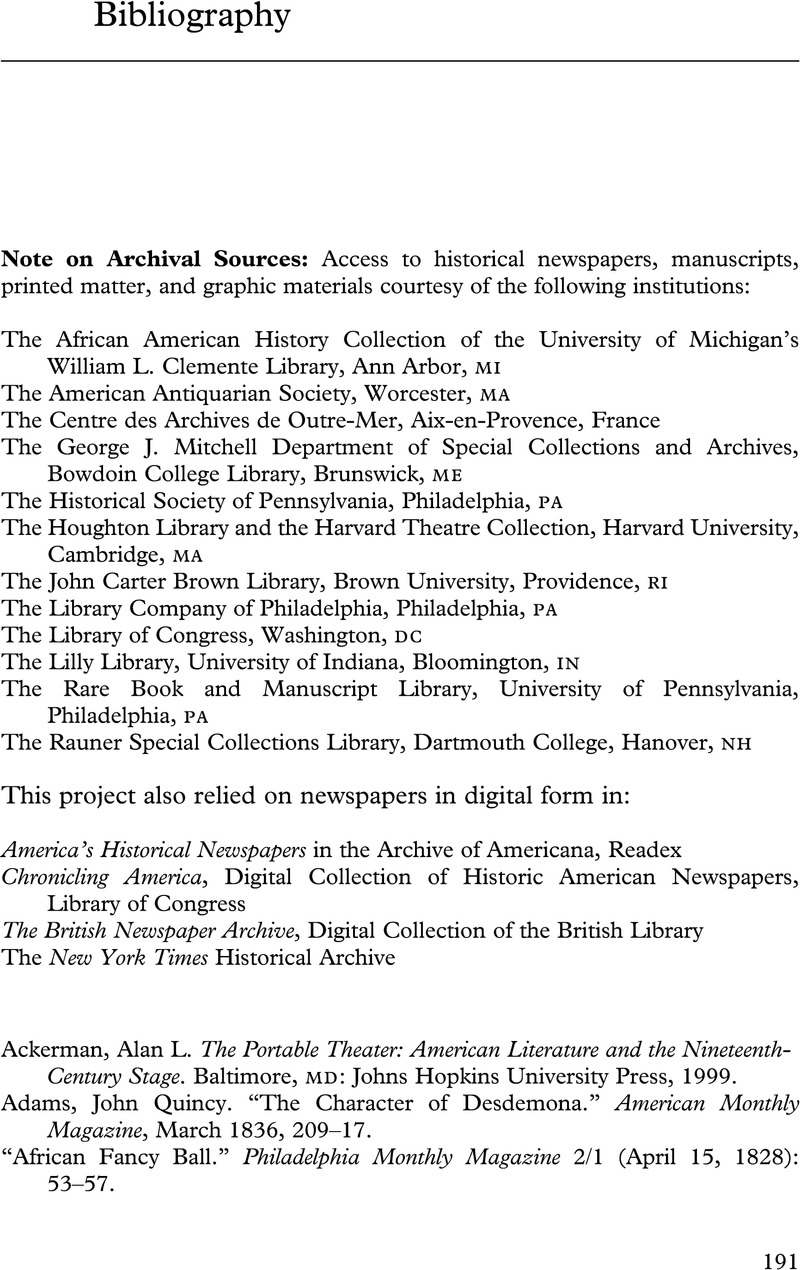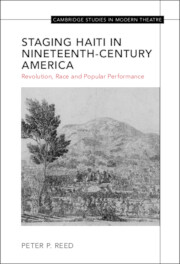Book contents
- Staging Haiti in Nineteenth-Century America
- Cambridge Studies in Modern Theatre
- Staging Haiti in Nineteenth-Century America
- Copyright page
- Contents
- Figures
- Acknowledgements
- Introduction
- 1 Rebels and Refugees
- 2 The Lessons of Haiti
- 3 Virtuosity, Illegitimacy, and Haitian Royalty
- 4 Travesty and Transformation
- 5 Abolitionist Acts
- 6 Conclusion
- Bibliography
- Index
- References
Bibliography
Published online by Cambridge University Press: 18 November 2022
- Staging Haiti in Nineteenth-Century America
- Cambridge Studies in Modern Theatre
- Staging Haiti in Nineteenth-Century America
- Copyright page
- Contents
- Figures
- Acknowledgements
- Introduction
- 1 Rebels and Refugees
- 2 The Lessons of Haiti
- 3 Virtuosity, Illegitimacy, and Haitian Royalty
- 4 Travesty and Transformation
- 5 Abolitionist Acts
- 6 Conclusion
- Bibliography
- Index
- References
Summary

- Type
- Chapter
- Information
- Staging Haiti in Nineteenth-Century AmericaRevolution, Race and Popular Performance, pp. 191 - 210Publisher: Cambridge University PressPrint publication year: 2022
References
Bibliography
Note on Archival Sources: Access to historical newspapers, manuscripts, printed matter, and graphic materials courtesy of the following institutions:
The African American History Collection of the University of Michigan’s William L. Clemente Library, Ann Arbor, mi
The American Antiquarian Society, Worcester, ma
The Centre des Archives de Outre-Mer, Aix-en-Provence, France
The George J. Mitchell Department of Special Collections and Archives, Bowdoin College Library, Brunswick, me
The Historical Society of Pennsylvania, Philadelphia, pa
The Houghton Library and the Harvard Theatre Collection, Harvard University, Cambridge, ma
The John Carter Brown Library, Brown University, Providence, ri
The Library Company of Philadelphia, Philadelphia, pa
The Library of Congress, Washington, dc
The Lilly Library, University of Indiana, Bloomington, in
The Rare Book and Manuscript Library, University of Pennsylvania, Philadelphia, pa
The Rauner Special Collections Library, Dartmouth College, Hanover, nh
This project also relied on newspapers in digital form in:
America’s Historical Newspapers in the Archive of Americana, Readex
Chronicling America, Digital Collection of Historic American Newspapers, Library of Congress
The British Newspaper Archive, Digital Collection of the British Library
The New York Times Historical Archive

